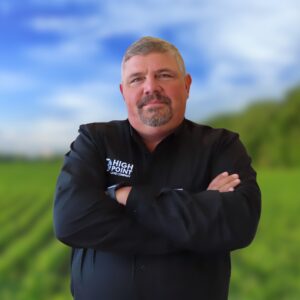
Land Specialist & Broker
NE, CO, SD, KS, OK, MO, WI, AR, WY
In the world of land use and wildlife policy, few topics spark as much debate as managed grazing in sagebrush country. For many years, people have considered cattle grazing a significant contributor to the decline of the greater sage-grouse. This bird is an essential indicator of the health of over 60 million acres of Western rangeland. That assumption has guided conservation policy, managed grazing restrictions, and land management plans across multiple states.
But what if we’ve been missing the mark?
In 2024, the Idaho Grouse and Grazing Project shared results from a ten-year study. Federal agencies, scientists, and ranchers supported this project.
The project aimed to learn how cattle grazing affects sage-grouse traits. This includes nest success, chick survival, and habitat conditions. The results are precise: when land managers graze land carefully, it does not harm sage-grouse as many thought.
This is significant news for landowners, ranchers, land brokers, and policy professionals alike. Not just a “win” for cattlemen, but a win for adaptive, science-based land stewardship.
Behind the Managed Grazing Study: A Rare Long-Term, Landscape-Level Experiment
The Idaho Grouse and Grazing Project started in 2014. One of the most comprehensive studies on the impact of livestock grazing on sage-grouse ecology exists. Researchers from the U.S. Fish and Wildlife Service collaborated with the University of Idaho.
They also worked with the Bureau of Land Management. They also included the Idaho Department of Fish and Game and local ranchers. Together, they set up five main research sites in southern Idaho. Later, they expanded to six sites.
What made this study unique?
- Duration: 10 years of active monitoring, including managed grazing, vegetation sampling, and wildlife tracking. Scale: More than 1,300 sage-grouse hens captured and radio-collared, over 1,200 nests monitored, and hundreds of broods studied.
- Design: We used a paired Before-After-Control-Impact (BACI) approach. This method lets us compare rested pastures with spring-grazed, fall-grazed, and long-term ungrazed pastures. An example of ungrazed pastures is at the Idaho National Laboratory. This area has not been grazed for over 50 years.
This was not just a one-time estimate or a model. Researchers used real data collected from actual working lands under real grazing pressure.
Key Findings: What the Data Say
- Grazing did not lower nest success. In all study sites and years, grazing during nesting had little effect on nest success or chick survival. Some grazed pastures produced similar or even better reproductive outcomes than pastures that farmers had not grazed for years.
- Hen and Brood Survival Stayed the Same: The survival rates of radio-collared hens and their broods did not differ much between grazing treatments. Instead, weather conditions, particularly drought years, were more influential on chick survival than the presence of livestock.
- Insect Communities Changed, but Did Not Disappear: One primary concern about grazing is its impact on insect populations. This is especially true for the insects that sage-grouse chicks need for protein when they are young.
- Insect populations differed between grazed and rested sites: with more ants and beetles observed in the grazed areas. In rested regions, there were more grasshoppers. Overall, insect availability was enough in both cases.
- Vegetation conditions changed from site to site. The study showed what many land experts already know: there is no one-size-fits-all grazing result. Vegetation responses varied by site, soil type, climate, and grazing intensity. In some locations, spring grazing helped maintain habitat heterogeneity, a crucial characteristic for providing nesting and foraging cover.
- The Policy Implications: Science Over Assumptions: In the past, researchers grouped grazing with other stressors. These include energy development, wildfires, and habitat loss, all of which threaten the survival of the sage-grouse. As a result, authorities often impose grazing restrictions with limited site-specific evidence. This study challenges that logic.
Here’s what the Idaho data tell us:
- Grazing, when managed in accordance with existing BLM guidelines, is not inherently harmful to sage-grouse.
- Rested pastures do not automatically result in better reproductive success.
- This study did not include heavy grazing and poor timing. While these remain concerns, low to moderate spring grazing appears to be effective in conjunction with sage-grouse conservation.
This enables more effective land management strategies. These strategies can balance ecological goals with the economic needs of ranching.
A Win-Win for Conservation and Working Lands
One of the lesser-discussed benefits of responsible grazing is fuel load management. Cattle grazing can help reduce fine, flashy fuels, such as cheatgrass and annual forbs. This can lower the severity and spread of wildfires. Wildfires are one of the biggest threats to sagebrush ecosystems today.
This study confirms what many landowners and brokers already know: conservation and production can coexist effectively. Cattle grazing can be beneficial for the environment when practiced sustainably.
It helps keep landscapes open. It also supports rural economies. Additionally, it protects the habitat that sage-grouse need.
Takeaways for Landowners and Land Professionals
If you’re a landowner, land broker, or property manager working in the West, here’s what you should be thinking about:
- Use this study in your land conversations. You can help clients buy or sell grazing land. You can also advise on conservation easements or write a management plan. This research provides objective evidence to support your work. It demonstrates that responsible grazing is a valid and valuable approach to land use.
- Avoid one-size-fits-all assumptions. Just because a regulation or best practice exists doesn’t mean it’s optimal for your site. Always look at grazing in the context of soil, water, vegetation, and wildlife data.
- Invest in monitoring and adaptive planning. Decision-makers should base long-term stewardship decisions on data, not guesswork. The Idaho project demonstrated that results are often not straightforward. You can only tell what works if you measure it.
- Push for science-backed policy. Land professionals have a seat at the table for shaping land use policy. Let’s use it to advocate for adaptive management based on facts, not fear.
Final Thoughts:
For too long, managed grazing has been framed as incompatible with sage-grouse recovery. Thanks to the Idaho Grouse and Grazing Project, we now have ten years of complex data showing otherwise.
Time to move beyond assumptions and start building land policy, and land deals, on real science. That means embracing grazing as a tool, not a threat, and recognizing the deep knowledge that ranchers and land managers bring to the table.
Land is complex. So are ecosystems. Through partnerships, monitoring, and a focus on data-driven decision-making, we can continually improve. This is good for the birds, the land, and the people who rely on them.
Want to dig into the complete data set or see how these findings apply to your property? Reach out, I’m always happy to connect landowners with the tools and strategies that move us all forward.
Do you want to learn more?
If you’re considering buying or selling land, reach out to a local High Point Land Company agent. For more questions regarding land real estate, visit our YouTube Knowledge Center!
About Koby Rickertsen
Koby Rickertsen is an Accredited Land Consultant (ALC) and a Multi-State Land Broker. He is also a Senior Real Estate Specialist at High Point Land Company.
Koby has strong agricultural roots and a disciplined background in the U.S. Navy Submarine Force. He uses a data-driven and results-focused approach to land transactions. This helps clients get the most value from their farmland. Reach out to Koby at 308-529-0067 or email Koby@highpointlandcompany.com.
Related Pages:
Sources:
- U.S. Fish and Wildlife Service. (2024). Grouse and Grazing Project: Effects of Cattle Grazing on Demographic Traits of Greater Sage-Grouse. Retrieved from
- Idaho Grouse and Grazing Project. (2024). Science for Working Rangelands. Retrieved from https://idahogrousegrazing.org/
- U.S. Fish and Wildlife Service. (2023). Greater Sage-Grouse Conservation Objectives Team Final Report. Retrieved from https://www.fws.gov
- Bureau of Land Management. (2021). Grazing Management and Sage-Grouse Habitat. Retrieved from https://www.blm.gov/programs/fish-and-wildlife/sage-grouse
- Smith, J.T., et al. (2023). Long-Term Trends in Sage-Grouse Populations: Role of Grazing, Vegetation, and Climate. Journal of Wildlife Management (pending publication).
- University of Idaho Rangeland Center. (2024). Synthesis Summary: Sage-Grouse Response to Grazing Intensity and Timing.

